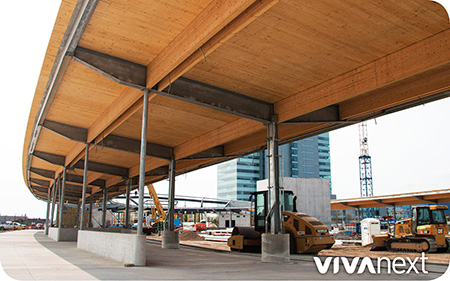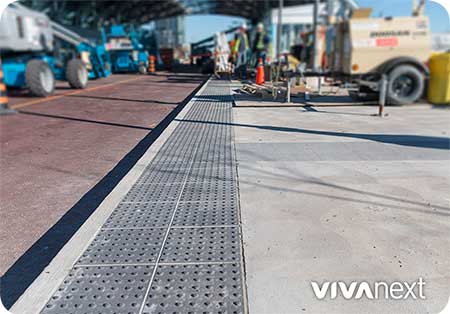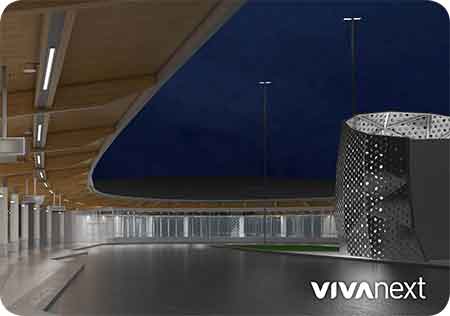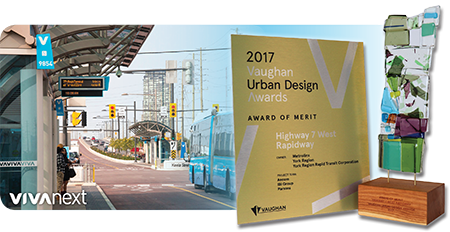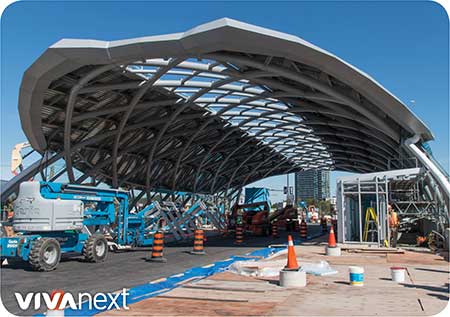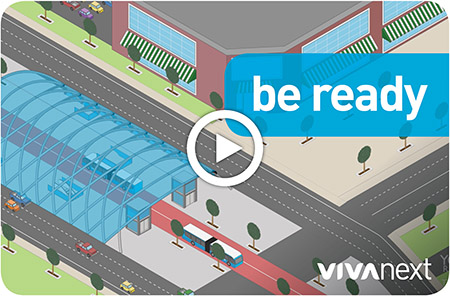
Building our Vaughan Metropolitan Centre rapidway station required close collaboration with the TTC, since it’s so near to their new subway station – literally on top of it, in fact! The collaboration began at the design stage, and continued between our two construction teams as we brought the plans to life.
staging for success
With the new rapidway station being built in layers, and in the middle of the road, staging was crucial for both the vivaNext team and TTC. Staging means carrying out work in phases, such as shifting traffic lanes from side to side to give crews room to work safely. Another example was how we stayed clear of the TTC work crews while they finished the subway box, before we started on the concrete and rebar that went on top.
teamwork
Coordinating with the TTC, vivaNext crews shifted the traffic to one side while we built the road on the other side, and they worked on that side of the underground subway structure. Then, when we flipped the traffic back to widen the other side, the TTC also switched sides. A detailed planning process ensured we both did what we needed to do, in the right order and the shortest possible time, without tripping over each other.
Building the escalators and elevators from the TTC station to the BRT station also took detailed planning and coordination. Rules and specifications determine how closely crews can work to adjoining crews. The subway and rapidway stations share a very small area. If you’ve ever done a renovation, this was like having one group building the stairs, and another building the walls and hanging the wallpaper.
the collaboration continues
Most of that coordination is done now, with the vivastation area fully under our contractor’s control. We’ll continue to work closely with the TTC as we get to the final stages of signoff for the station equipment. On opening day, December 17, there may be some finishing touches still required, but we will open for service!
The collaboration continues even after the work is done, since the goal of the new station is to create seamless connections between Viva rapid transit and the TTC. We’re looking forward to a long, happy future of working together to get you where you want to be.

